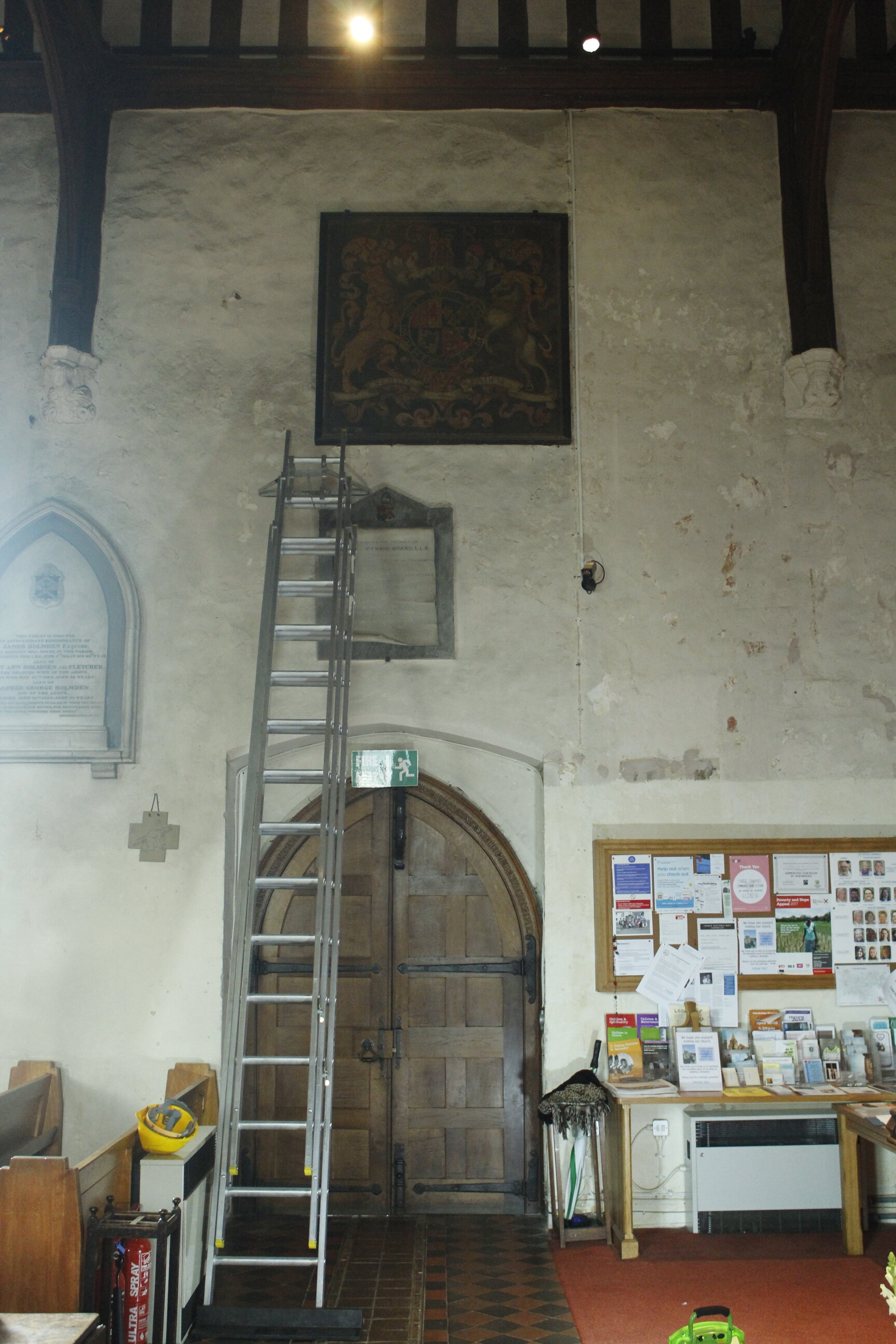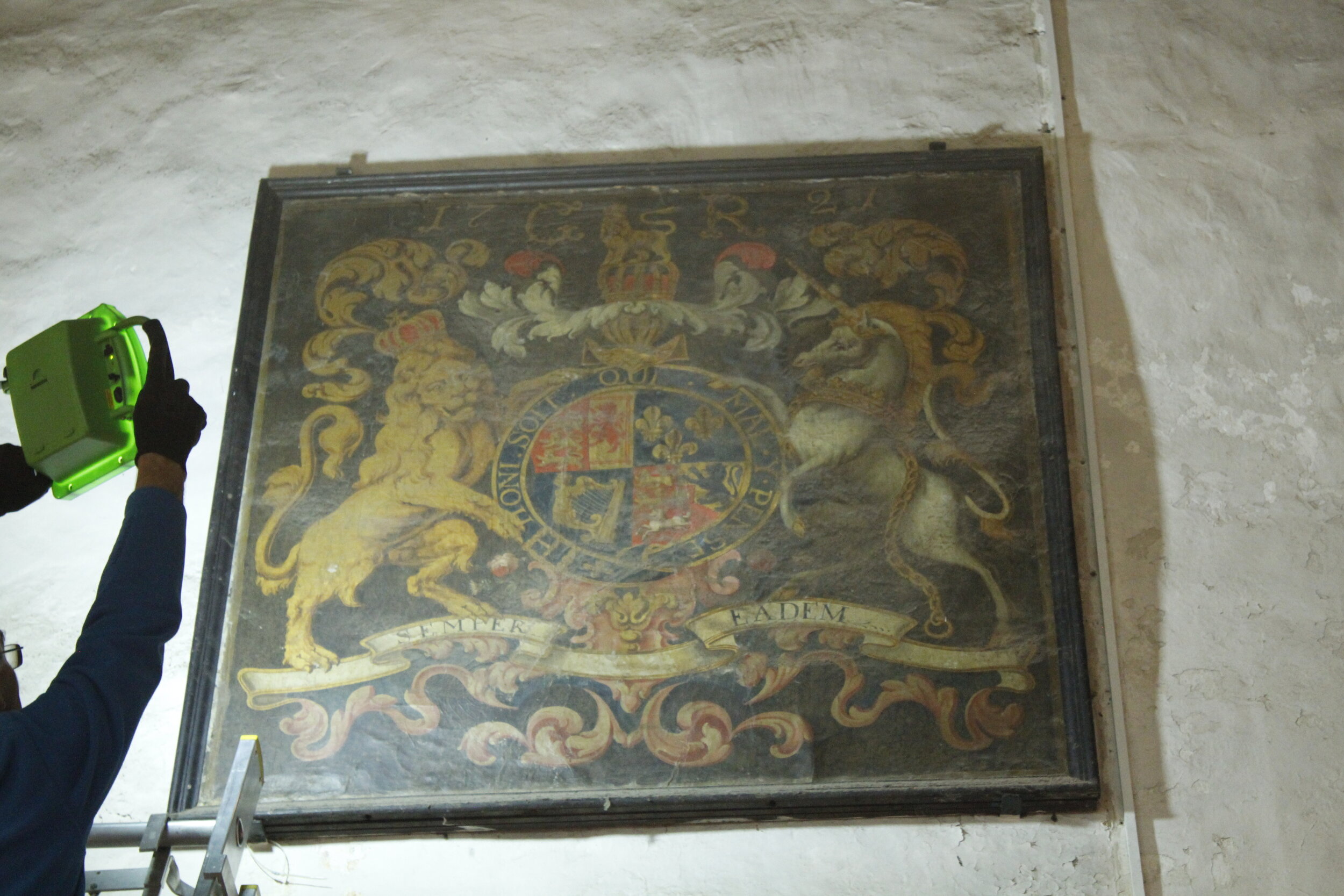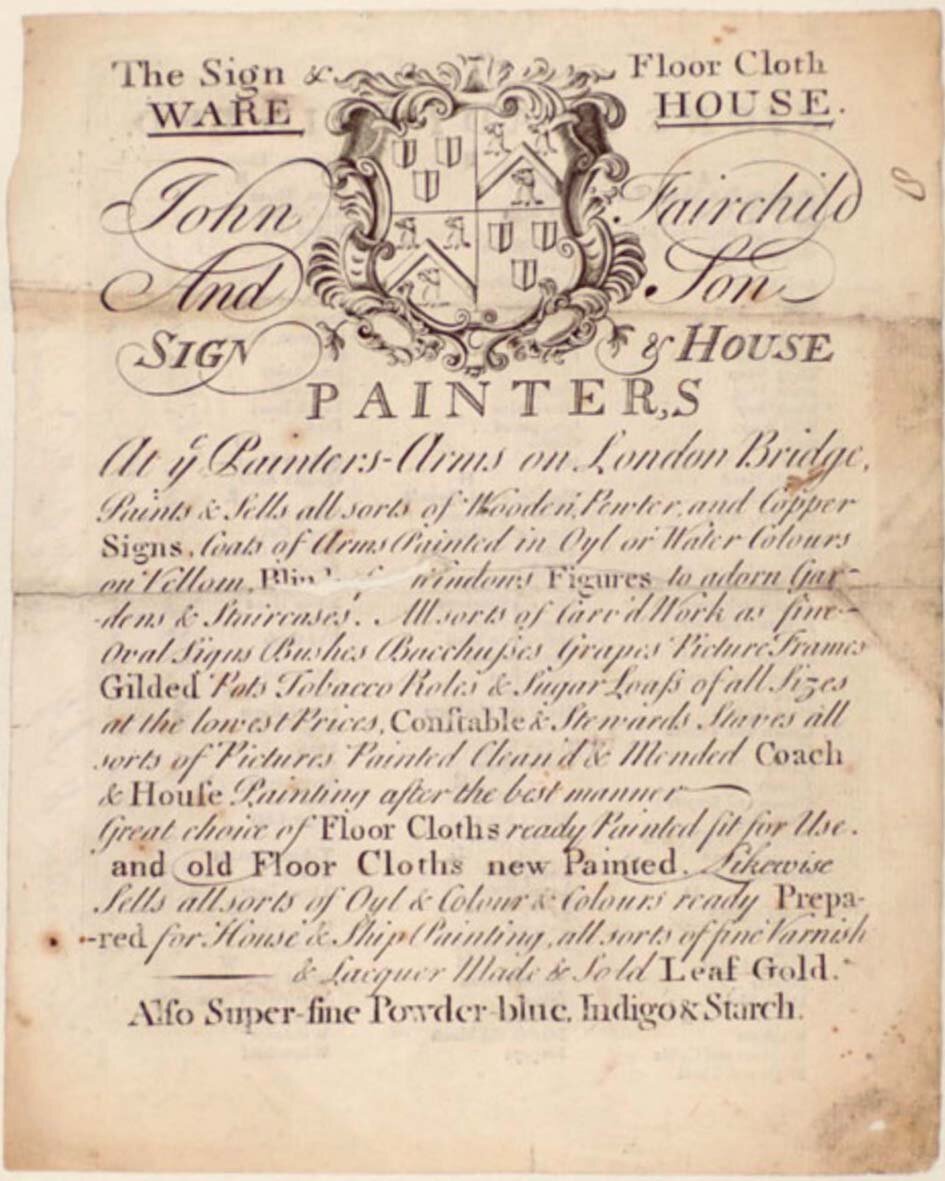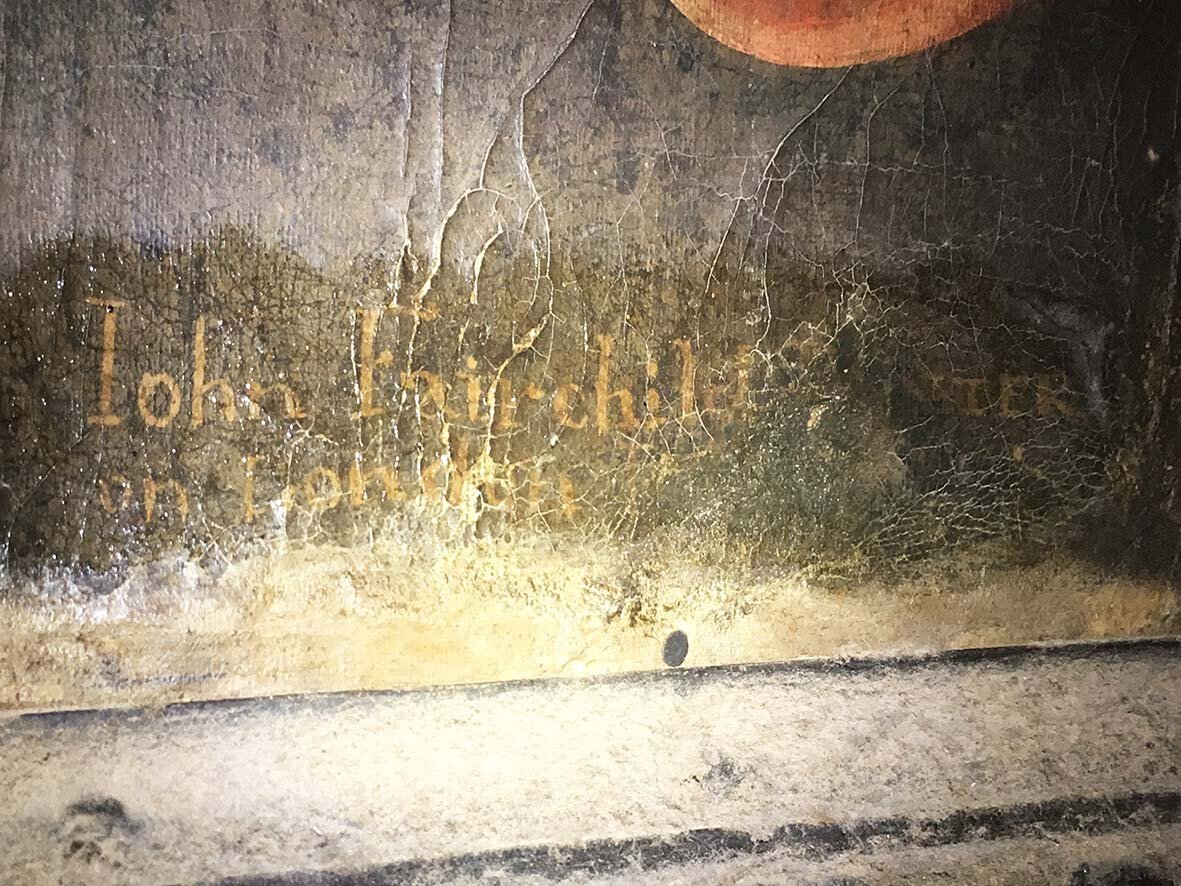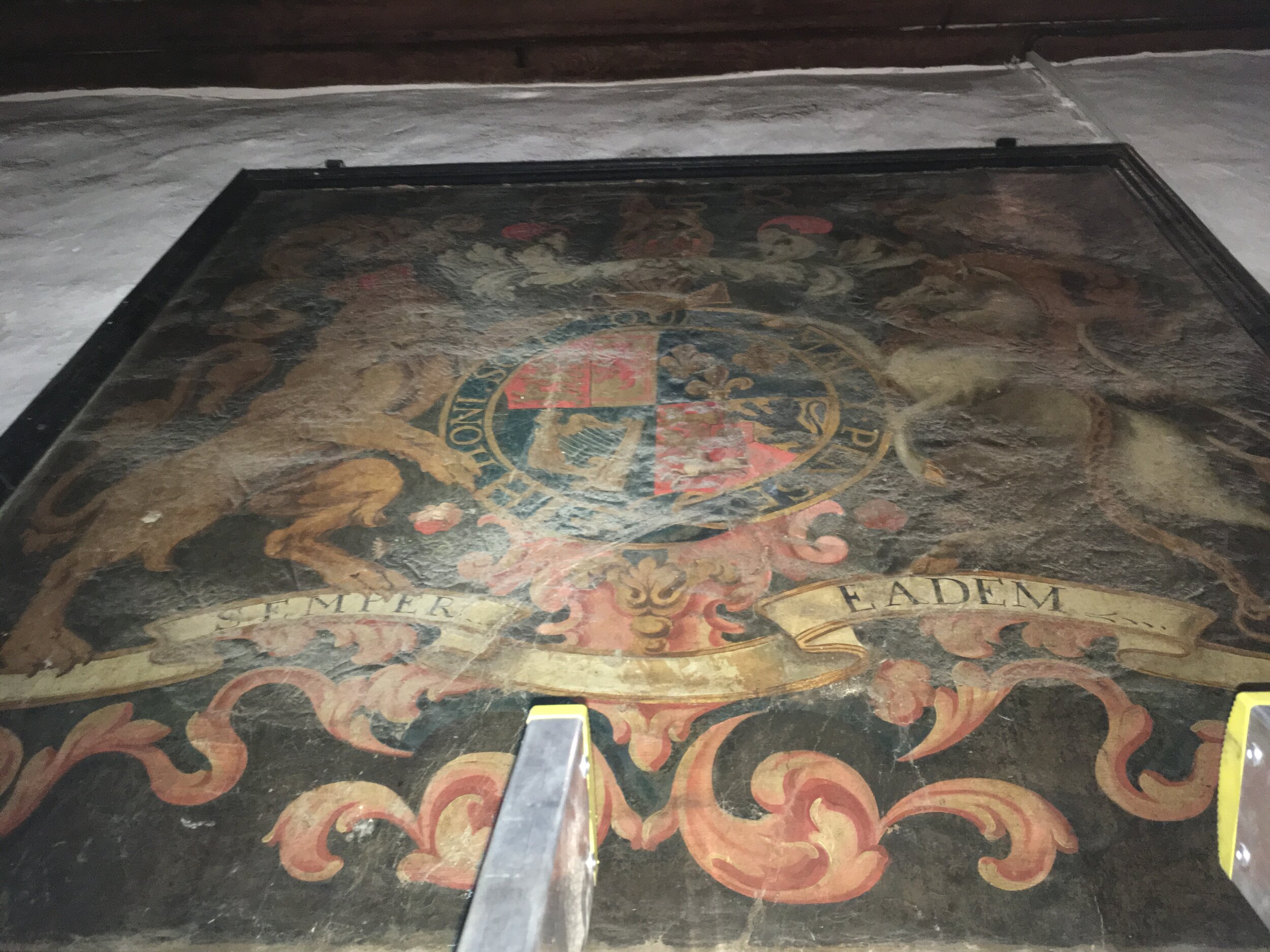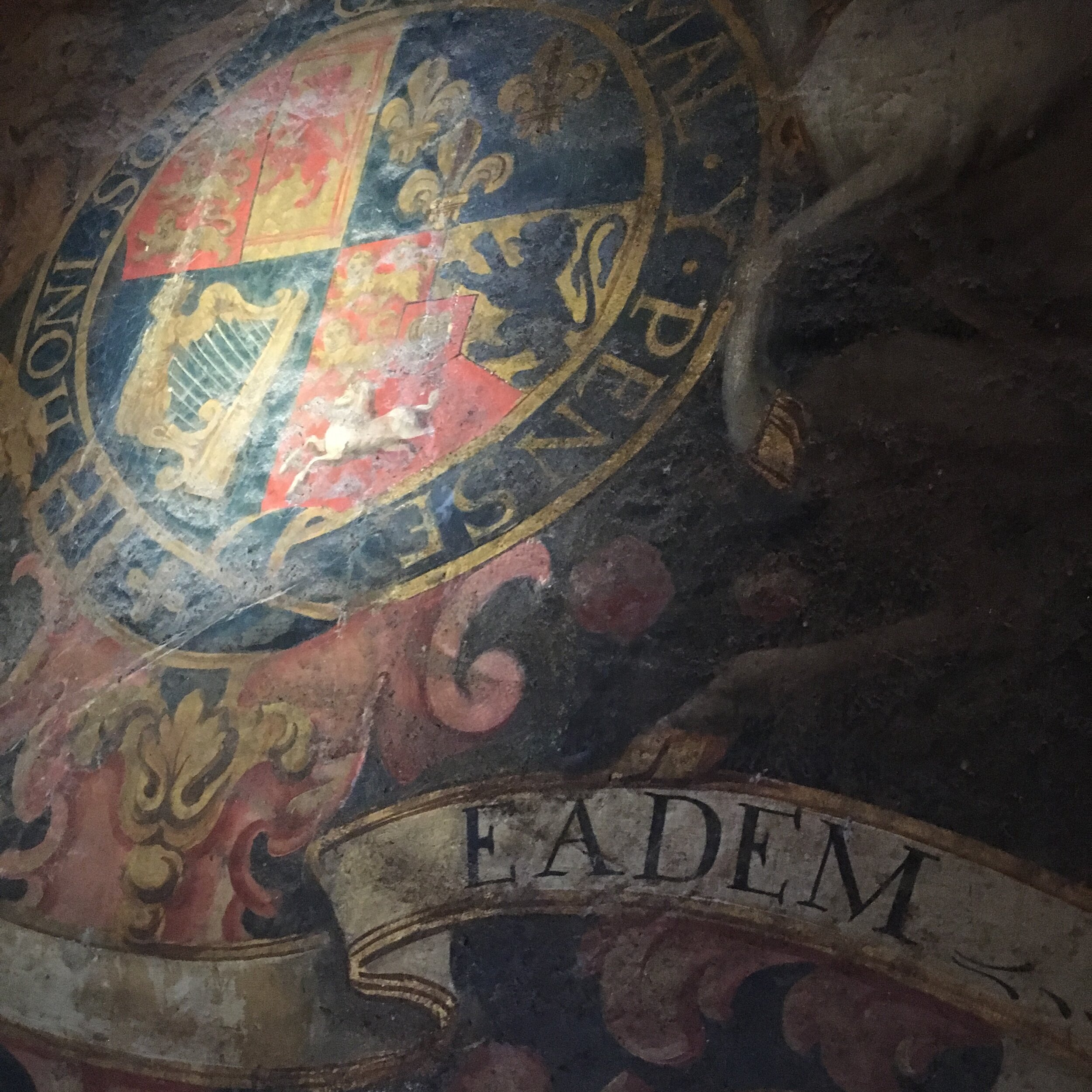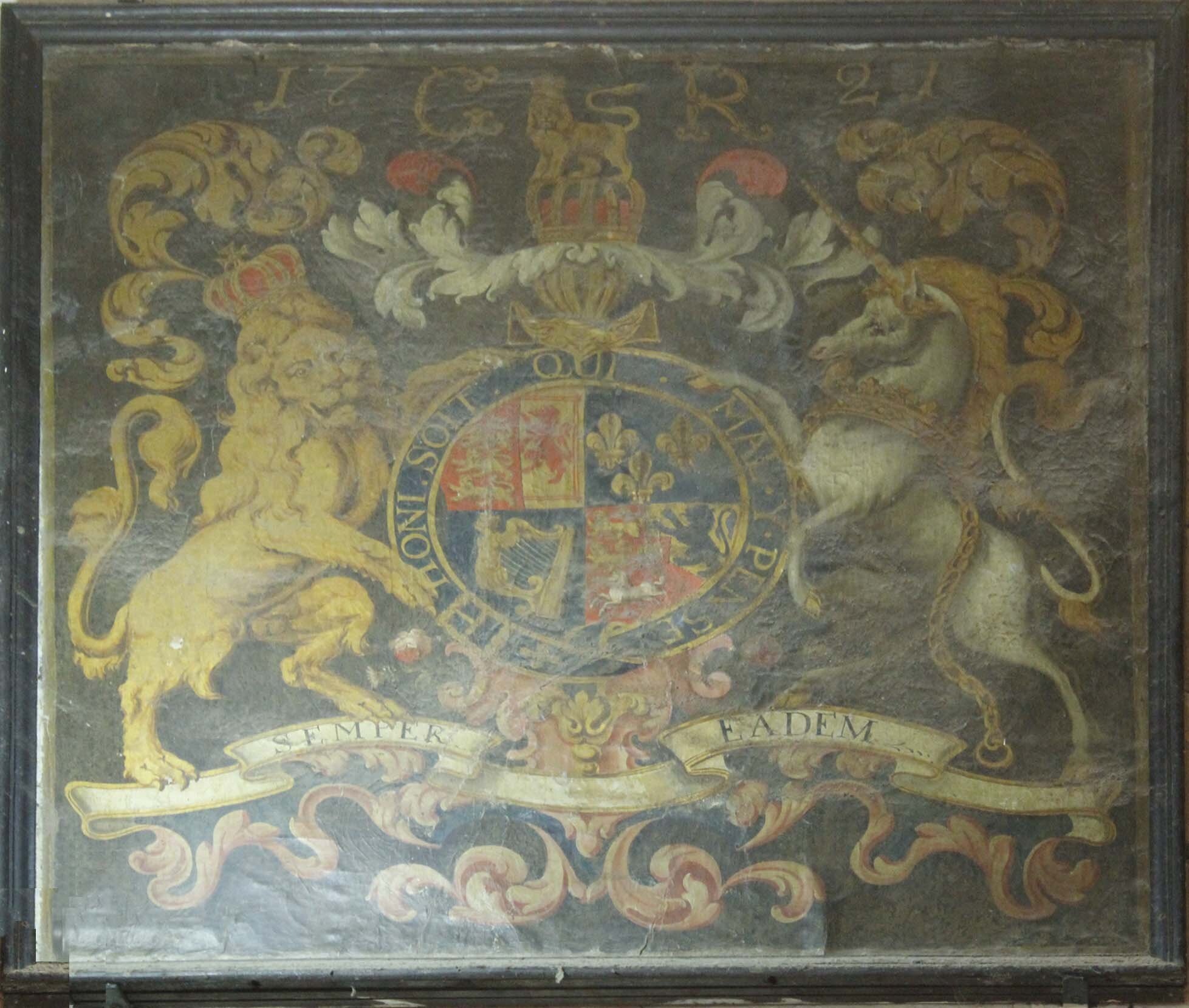Discoveries At Edenbridge
It all began with an inspection of the Royal Arms hanging above the south door of St Peter and St Paul’s church in Edenbridge.
Located high on the wall was a very discoloured, heavily degraded painting, barely visible in the gloom. The paint surface was almost illegible from the ground but a strong lamp revealed hints of vivid colour beneath the dark varnish including a signature “John Fairchild PAINTER of London”. John Fairchild was a commercial painter whose work is recorded in the trade card that he produced. By 1757 John Fairchild and Son “Sign and House Painters at Ye Painters Arms London Bridge“ offered a whole range of good and services. Fairchild’s trade card stated that he “Paints and sells all sorts of Wooden, Pewter and Copper Signs, Coats of Arms in Oyl….” and and on the reverse is a list of his stock of 131 “Signs Ready Painted”. Fairchild’s trade card is interesting in recording the commercialisation of such paintings. From the early 17th century during the reign of Charles I, a tradesman would advertise the location of his shop by displaying a sign painted, carved in wood or made in pewter, copper or iron and typically hung from an iron bracket.
However, by 1762 in the wake of signs falling down (their brackets were often in a state of disrepair and some were so large as to pull down the fronts of buildings) and in order to encourage the circulation of air in narrow streets, a proclamation was issued ordering the removal of hanging signs in the City of London. In 1763 there was a similar decree for the City of Westminster. These changes were eventually to lead to the further development of street numbering in London
First Look
After
After removing an old glue lining, part of a much earlier restoration, and cleaning off the old, semi-opaque ‘bloomed’ varnish the painting was transformed.
The arms of George I - the original colours still bright and vividly preserved. The work on the Royal Arms was just the first part of what was to become a major renovation of the interior. Arte were called in to survey the walls of the church ahead of a complete redecoration of the interior, a process which would lead to the discovery of early 14th century wall paintings including a St Christopher beneath the Royal Arms on the south wall.
